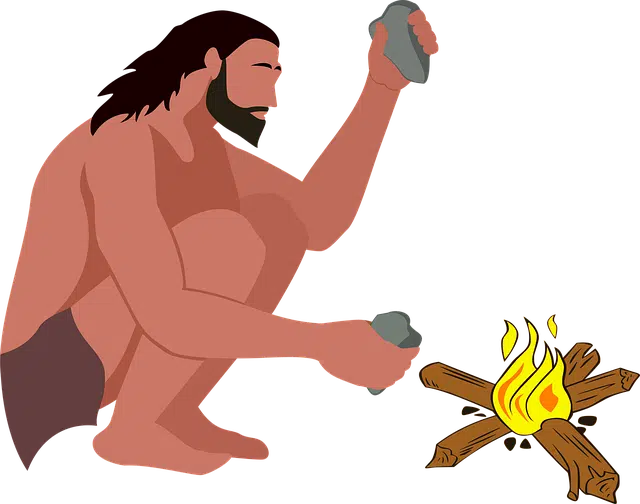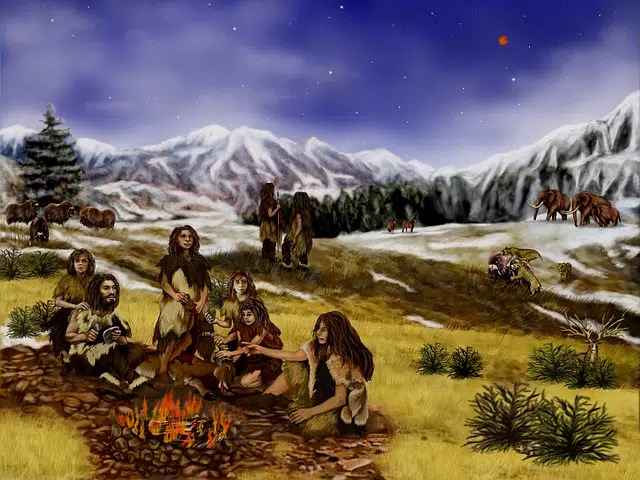
Prehistory is known through different traces and vestiges.
Prehistory is the period of human life before written documents . This period is known by vestiges such as instruments, buildings, cave paintings or bones. The term is also used to name the study of said period and the work that deals with the time.
Prehistory , therefore, spans from the appearance of the first human being to the invention of writing (around 3,000 BC). Its limits are not exact (writing did not develop at the same time in all regions of the planet, for example), while some historians maintain that history must encompass all human events and, therefore, prehistory cannot exist. as is often mentioned.
Divisions of prehistory
Depending on the continent in question, we find some differences when it comes to classifying Prehistory. Thus, for example, in Europe it is established that it is made up of two large groups: the Stone Age and the Metal Age. The latter, for its part, is divided into Chalcolithic, Bronze Age and Iron Age.
In the case of America, for its part, this classification is established in four clearly delimited stages that would be the Lithic Period, the Archaic Period, the Formative Period and finally the threshold.
However, in general it is considered that Prehistory is made up of three periods:
Paleolithic (2,500,000 years – 6,000 years). The most significant thing about this time is that humans used carved stones as well as sticks and bones for their tasks. It was here that fire was discovered and we must also highlight the fact that man served not only as a gatherer but also as a hunter.
Neolithic (5,000 years ago). It is in this phase when the first settlements appear since man stops being nomadic. The reason for this to occur is that he discovers what agriculture and livestock are. It is already beginning to polish stones, ceramics and even textile garments.
Age of Metals . There are three phases that occurred within this period: Copper Age , Bronze Age and Iron Age , which bear their name based on the material that man used to the greatest extent.

Various sciences are responsible for studying different aspects of prehistory.
The beginning of the story
In general, the end of prehistory and the beginning of history are usually considered to be marked by various processes that include the modification of the habitat, the emergence of administrative power, the advancement of socialization and the intensification of commercial exchanges.
Archaeology , a specialty that studies societies through their material remains, is the science that deals with matters related to prehistory. It is supported by auxiliary sciences such as anthropology and ethnography .
Prehistory is also used to name the period in which a certain cultural, scientific, political movement, etc., is incubated. ( “The 1960s were the prehistory of the Internet” ) and the period preceding a moment of special significance ( “The prehistory of the NBA is found in the legendary ABA games” ).
Expert word
Sandra Azcárraga Cámara has a doctorate in Prehistory and Archeology from the Autonomous University of Madrid ( UAM ). This Spanish expert also specialized in Scientific Dissemination, doing a postgraduate degree at the Isabel I University of Castilla .
After participating in numerous excavations and surveys, he currently co-directs the work at Primitiva Complutum , an archaeological site on the San Juan del Viso hill ( Community of Madrid ) that is allowing the secrets of an ancient Roman city to be discovered.
We asked Dr. Azcárraga Cámara what aspects of prehistoric human beings generate the greatest interest or arouse fascination:
I am interested in everything that is not known or little known to date. Researching a little-explored topic or aspect is what fascinates me the most. In prehistory, or in Roman times, these aspects can be very varied, from knowing from which places certain objects imported to the site arrived from to more everyday aspects of the lives of its inhabitants.
Sandra Azcárraga Camera
